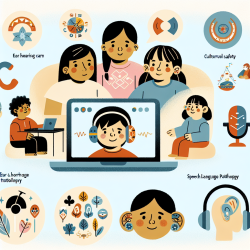Introduction
As a practitioner in speech-language pathology, understanding the environmental factors that influence mental health is crucial. A recent study titled Commute patterns and depression: Evidence from eleven Latin American cities provides valuable insights into how commute patterns affect mental health. This research can guide us in making informed decisions to improve therapy outcomes for children.
Understanding the Research
The study conducted across eleven Latin American cities reveals that longer commuting times are associated with a higher probability of depression. Specifically, every additional 10 minutes of commuting time increases the likelihood of screening positively for depression by 0.5%. More critically, it is the traffic delay, rather than the uncongested travel time, that correlates with depression, increasing the probability by 0.8% for every 10 additional minutes of delay.
Interestingly, the study also highlights that users of formal transit systems like subways or bus rapid transit are 4.8% less likely to experience depression compared to drivers. Moreover, lack of access to transit within a 10-minute walk from home is linked to a higher probability of depression.
Implications for Child Therapy
For practitioners providing online therapy services, such as those at TinyEYE, these findings underscore the importance of considering environmental stressors like commute patterns in our assessments and interventions. Here are some practical steps to integrate these insights:
- Assessment of Environmental Factors: Include questions about commute patterns in initial assessments to identify potential stressors affecting a child's mental health.
- Advocacy for Better Transit Access: Work with schools and communities to advocate for improved access to public transit, which can alleviate stress for both children and their caregivers.
- Flexible Scheduling: Offer flexible therapy schedules that accommodate the commuting challenges faced by families, thereby reducing stress and improving therapy engagement.
- Research and Collaboration: Encourage further research into how commute-related stress affects children specifically and collaborate with urban planners to address these issues.
Encouraging Further Research
While this study provides preliminary evidence, it is vital to continue exploring how environmental factors like commuting impact mental health, particularly in children. Practitioners should consider partnering with researchers to investigate these associations further and develop evidence-based interventions.
Conclusion
By integrating insights from commute patterns into our practice, we can enhance our understanding of the factors influencing children's mental health and improve therapy outcomes. As we continue to leverage data-driven decisions, we not only advance our field but also contribute to the well-being of the children we serve.
To read the original research paper, please follow this link: Commute patterns and depression: Evidence from eleven Latin American cities.










